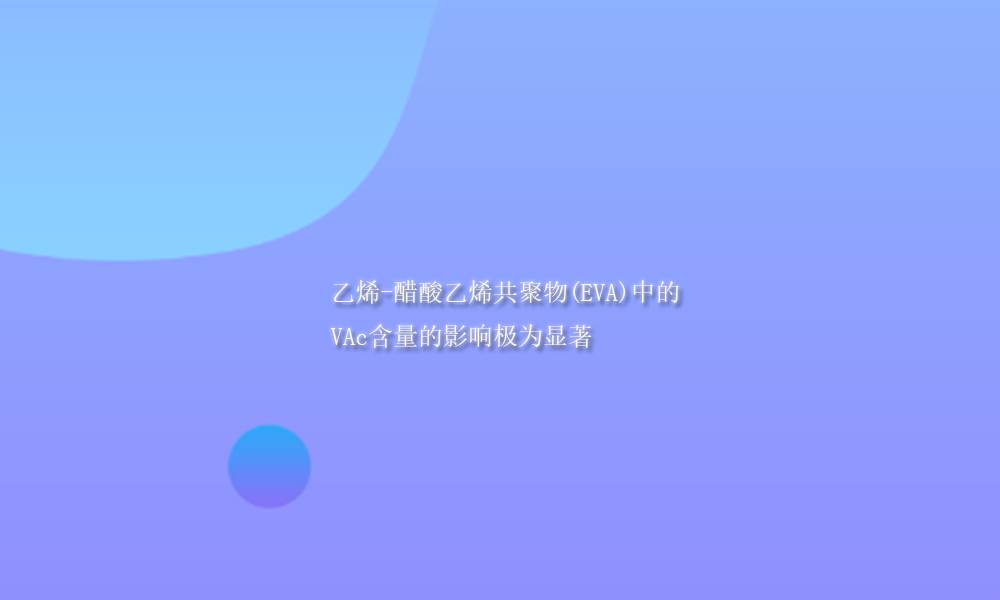
It is understood that ethylene-vinyl acetate copolymer (EVA) is a general-purpose polymer that is flammable and has no irritating burning smell. It is a product of ethylene and vinyl acetate. of random copolymers. Due to the short branched chains formed by the introduction of polar acetate groups into the ethylene chain, the original crystallization state is changed, making EVA more flexible and elastic than polyethylene.
The influence of VAc content in EVA is extremely significant:
EVA is often used as a modifier to be blended with other polymers. This is because EVA has good Flexibility, toughness, stress crack resistance and bonding properties. The blend of polyethylene and ethylene vinyl acetate copolymer (EVA) has excellent flexibility, processability, good air permeability and printability. The blend of polyethylene and EVA depends on the blending amount of EVA and the VAc in EVA. The content, molecular weight of EVA, blend preparation, processing and molding conditions and many other factors change and show different properties.
Among them, the influence of VAc content in EVA is extremely significant. When the VAc content in EVA is low (6.6%), the EVA blending amount has basically no effect on the crystallinity; the EVA blending amount has a more obvious impact on the density, that is, the blend density increases with the increase in the EVA blending amount, especially After the EVA content reaches 25%, it rises faster. EVA containing a large amount of VAc has a greater modification effect on PE. Both the crystallinity and density change drastically. Increasing the VAc content in EVA also leads to a rapid increase in the elongation of the PE/EVA blend. The modification effect produced by increasing the proportion of EVA in PE/EVA is generally similar to the effect of increasing the VAc content in EVA.
For example, the VAc content in EVA resin and the different uses of MFR are also different. EVA with low VAc content is similar to LDPE, soft and has good impact resistance, and is suitable for manufacturing heavy-duty packaging and composite materials. EVA with a VAc content of 10% to 20% has good transparency and is suitable for making agricultural films and shrink packaging films. EVA with higher VAc content can be used as adhesives, coatings, and paints, and can also be made into EVA foam plastics, electrical appliances, cable insulation layers, and daily necessities. It can also be used for polymer modification to improve the flexibility and rigidity of plastics. Adding low-polymerization EVA to fuel oil can improve its cold flow characteristics. In other applications, the copolymers are finished with no or very small amounts of additives or modifiers.
PS: Emulsion polymerization is a method for producing EVA products with high VAc content, with a VAc content of 70% to 90%. The emulsion method is to add VAc and initiator K2 S2 0s or (NH4)2 S2 0a to the prepared emulsion medium (stabilizers, emulsifiers, etc. are added to the water medium) in a high-pressure reaction kettle. By adding ethylene and polymerizing under conditions below 95°C and 1 to 10MPa, a copolymer emulsion with a VAc content of 70% to 90% can be obtained.

 微信扫一扫打赏
微信扫一扫打赏

